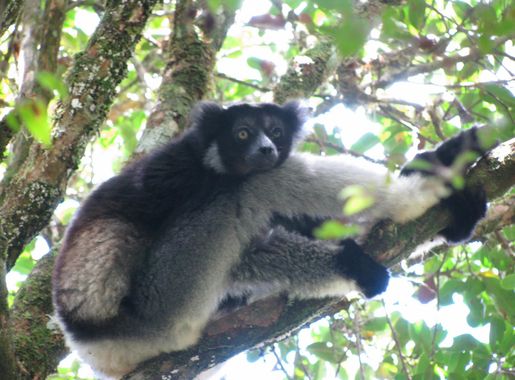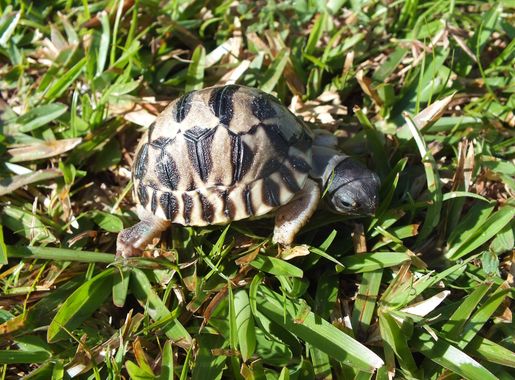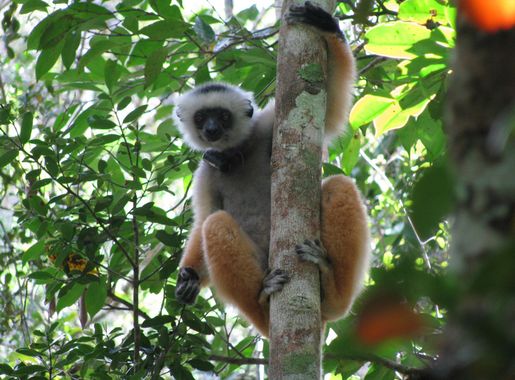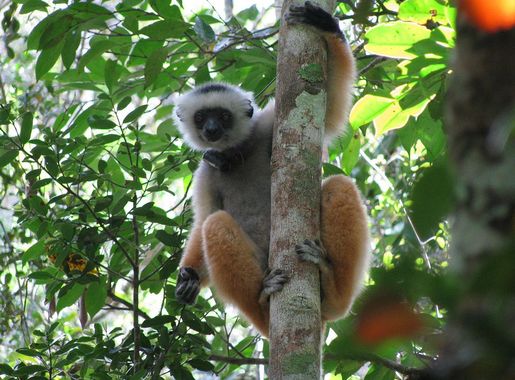
The Enchanting Wilderness of Andasibe-Mantadia National Park
Discover the rich biodiversity of Andasibe-Mantadia National Park in Madagascar, home to unique wildlife, stunning landscapes, and vibrant local culture.
Nestled in the eastern rainforests of Madagascar, Andasibe-Mantadia National Park is a lush haven for nature lovers and adventurers alike. The park covers an impressive area of over 150 square kilometers, offering a rich tapestry of flora and fauna that is unique to this part of the world. The park is divided into two main sections: Andasibe (also known as Perinet) and Mantadia, each offering distinct landscapes and experiences. One of the park's most renowned inhabitants is the Indri, the largest species of lemur, famous for its hauntingly beautiful calls that echo through the forest canopy. Visitors can also spot other lemur species, chameleons, and an array of colorful birds. The park's dense forests are interspersed with sparkling streams and waterfalls, creating a picturesque setting for hiking and nature walks. Andasibe-Mantadia is not just about wildlife; it's a place where you can immerse yourself in the local culture. Nearby villages offer a glimpse into the daily lives of the Malagasy people, and local guides provide valuable insights into the park's ecology and conservation efforts. Whether you're an avid birdwatcher, a photography enthusiast, or someone simply looking to escape into nature, Andasibe-Mantadia National Park promises an unforgettable experience.
Local tips in Andasibe-Mantadia National Park
- Hire a local guide to enhance your wildlife spotting experience and learn about the park's ecology.
- Visit early in the morning or late in the afternoon for the best chance to see the Indri lemurs.
- Wear sturdy walking shoes and bring rain gear, as the weather can be unpredictable.
- Consider visiting both sections of the park, Andasibe and Mantadia, for a more comprehensive experience.
- Respect the local wildlife by keeping a safe distance and not feeding the animals.
The Enchanting Wilderness of Andasibe-Mantadia National Park
Nestled in the eastern rainforests of Madagascar, Andasibe-Mantadia National Park is a lush haven for nature lovers and adventurers alike. The park covers an impressive area of over 150 square kilometers, offering a rich tapestry of flora and fauna that is unique to this part of the world. The park is divided into two main sections: Andasibe (also known as Perinet) and Mantadia, each offering distinct landscapes and experiences. One of the park's most renowned inhabitants is the Indri, the largest species of lemur, famous for its hauntingly beautiful calls that echo through the forest canopy. Visitors can also spot other lemur species, chameleons, and an array of colorful birds. The park's dense forests are interspersed with sparkling streams and waterfalls, creating a picturesque setting for hiking and nature walks. Andasibe-Mantadia is not just about wildlife; it's a place where you can immerse yourself in the local culture. Nearby villages offer a glimpse into the daily lives of the Malagasy people, and local guides provide valuable insights into the park's ecology and conservation efforts. Whether you're an avid birdwatcher, a photography enthusiast, or someone simply looking to escape into nature, Andasibe-Mantadia National Park promises an unforgettable experience.
When is the best time to go to Andasibe-Mantadia National Park?
Iconic landmarks you can’t miss
Réserve spéciale d'Analamazoatra
Experience the breathtaking biodiversity and enchanting wildlife of Réserve Spéciale d'Analamazoatra in Madagascar, a nature lover's paradise.
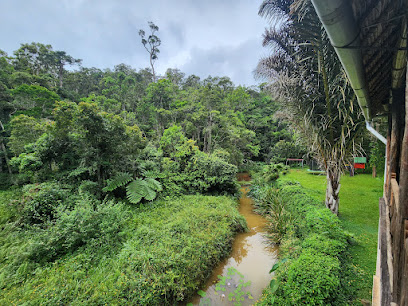
Vakona Forest Lodge
Experience the natural beauty and unique wildlife of Madagascar at Vakona Forest Lodge, a perfect blend of comfort and adventure in the rainforest.
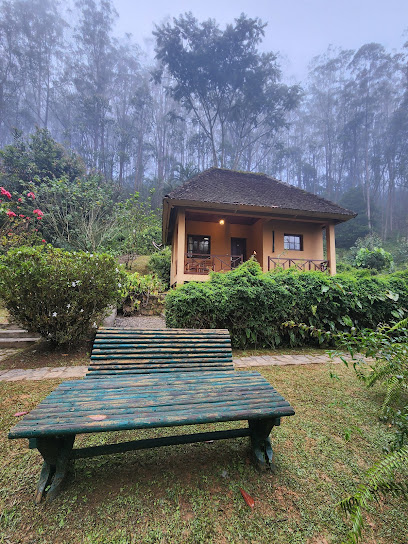
Mantadia Lodge
Experience the tranquility of Mantadia Lodge, your gateway to Madagascar's stunning landscapes and vibrant wildlife in Mantadia National Park.

ANDASIBE LEMURS LODGE
Experience the magic of Madagascar at Andasibe Lemurs Lodge, your serene sanctuary amidst lush landscapes and vibrant wildlife.
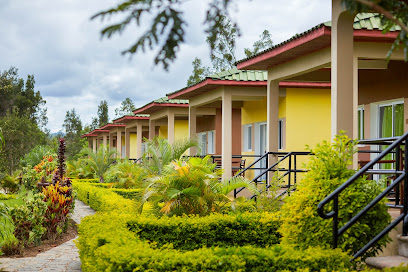
Andasibe Hotel - Andasibe/Mantadia Park
Experience the beauty of Madagascar at Andasibe Hotel, your perfect base for adventure in Andasibe-Mantadia National Park.

Park VOIMMA
Explore the lush landscapes and vibrant wildlife of Park VOIMMA in Andasibe, a serene escape into Madagascar's natural wonders.
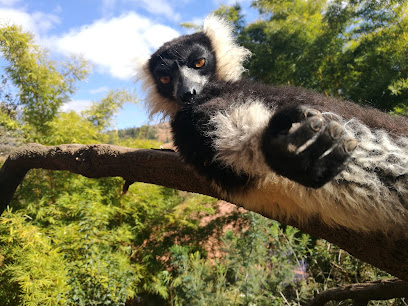
Parc National Andasibe Mantadia
Explore the enchanting biodiversity of Parc National Andasibe Mantadia, a must-visit destination for nature lovers in Madagascar.
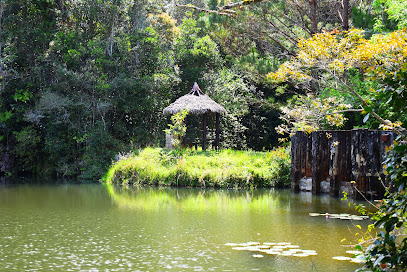
Relais de Mantadia
Discover the tranquility of Relais de Mantadia, your perfect retreat near Andasibe National Park, surrounded by Madagascar's breathtaking nature.

Parc Mitsinjo
Explore the breathtaking biodiversity of Parc Mitsinjo, a haven for wildlife enthusiasts and nature lovers in Madagascar's lush landscapes.
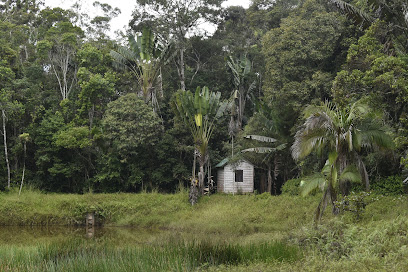
Unmissable attractions to see
Réserve Peyrieras Madagascar Exotic
Explore Réserve Peyrieras Madagascar Exotic, a wildlife haven showcasing Madagascar's unique biodiversity with lemurs, chameleons, and more.
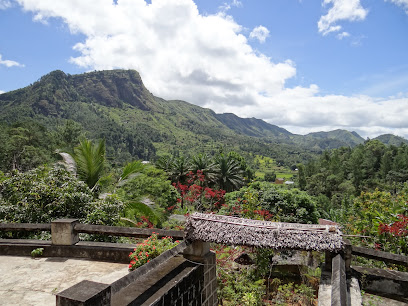
Vakôna Lemur Island
Discover the enchanting Vakôna Lemur Island, a wildlife sanctuary in Madagascar where playful lemurs await your visit amidst stunning natural beauty.

Park VOIMMA
Discover the natural beauty of Park VOIMMA in Andasibe, Madagascar, where lush landscapes and diverse wildlife await every nature enthusiast.
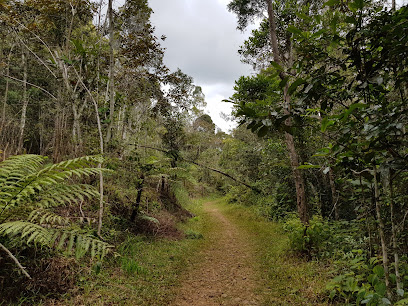
Parc National Andasibe Mantadia
Discover the unparalleled beauty of Madagascar's Parc National Andasibe Mantadia, a wildlife haven rich in biodiversity and stunning landscapes.
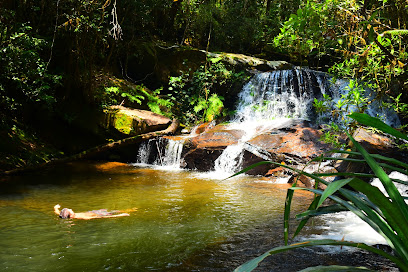
Réserve de Vohimana
Explore the breathtaking biodiversity of Réserve de Vohimana in Madagascar, a sanctuary for nature lovers and conservation enthusiasts alike.
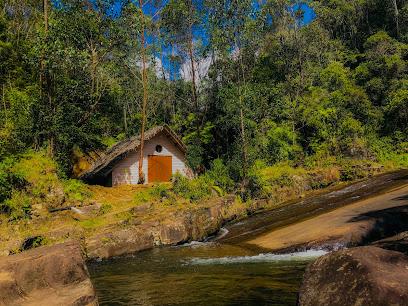
Parc Mitsinjo
Experience the enchanting biodiversity of Parc Mitsinjo, a conservation park showcasing Madagascar's unique flora and fauna amidst stunning landscapes.
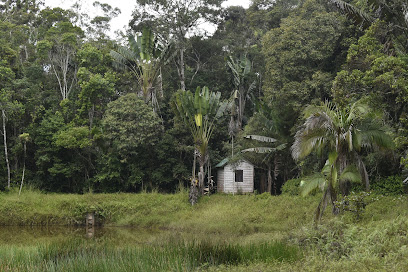
Eulophia Trail
Discover the beauty of Eulophia Trail, an idyllic hiking area in Falierana, Madagascar, offering stunning landscapes and a unique outdoor experience.

Chute Sacree Trail
Explore the breathtaking Chute Sacree Trail in Madagascar, a picturesque hiking area filled with stunning waterfalls and unique wildlife.

Essential places to dine
Réserve spéciale d'Analamazoatra
Explore Réserve spéciale d'Analamazoatra: A captivating nature preserve rich in biodiversity and home to enchanting lemurs.
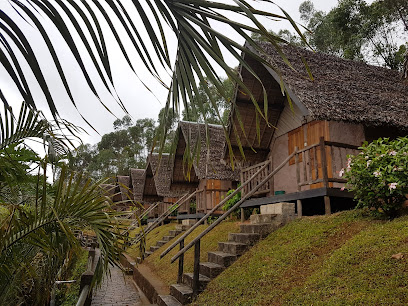
Vakona Forest Lodge
Experience nature's wonder at Vakona Forest Lodge—your gateway to Madagascar's rich wildlife and enchanting rainforests.
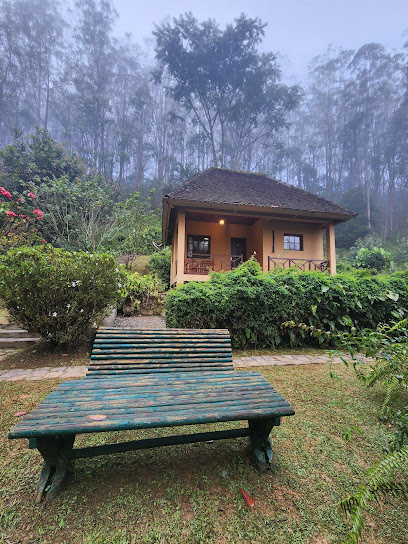
Andasibe-Mantadia National Park
Explore Andasibe-Mantadia National Park: A Wildlife Haven in Madagascar's Lush Rainforests.
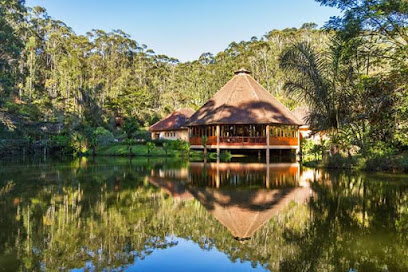
Hotel Feon' ny Ala
Discover the beauty of Madagascar at Hotel Feon' ny Ala - your gateway to nature and comfort in Andasibe.

Mantadia Lodge
Experience unparalleled comfort and breathtaking nature at Mantadia Lodge in Madagascar's stunning rainforest region.

ANDASIBE LEMURS LODGE
Discover unparalleled biodiversity at Andasibe Lemurs Lodge - your gateway to Madagascar's lush rainforest and iconic wildlife.
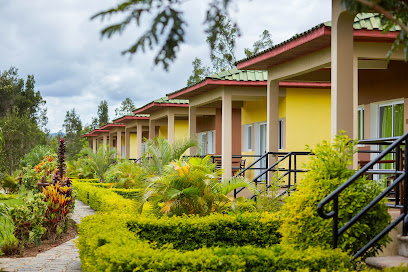
Andasibe Hotel - Andasibe/Mantadia Park
Discover unparalleled comfort at Andasibe Hotel near Madagascar's breathtaking Andasibe/Mantadia National Park, ideal for nature lovers.

Parc National Andasibe Mantadia
Discover Madagascar's lush rainforests and unique wildlife at Parc National Andasibe Mantadia – a must-visit destination for nature lovers.
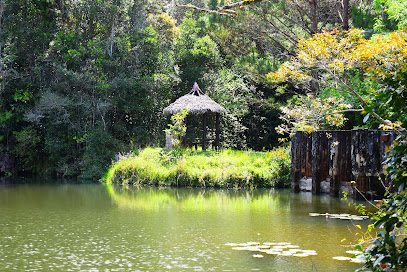
Relais de Mantadia
Discover the serene charm of Relais de Mantadia, your gateway to Andasibe National Park's extraordinary wildlife and lush landscapes.

Andasibe Cyperus Hotel
Experience tranquility at Andasibe Cyperus Hotel amidst Madagascar's stunning landscapes and vibrant wildlife.

Eulophiella
Experience tranquility and adventure at Eulophiella in Andasibe, Madagascar – your gateway to lush rainforests and unique wildlife encounters.
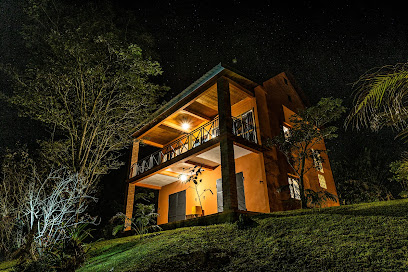
Andasibe Forest Lodge
Experience the enchanting beauty of Madagascar at Andasibe Forest Lodge – your gateway to unforgettable wildlife encounters.

Markets, malls and hidden boutiques
Réserve spéciale d'Analamazoatra
Explore the enchanting Réserve spéciale d'Analamazoatra, a biodiversity hotspot in Madagascar, home to unique wildlife and stunning landscapes.

Vakona Forest Lodge
Experience the stunning beauty of Madagascar at Vakona Forest Lodge, your gateway to lush rainforests and exotic wildlife encounters.
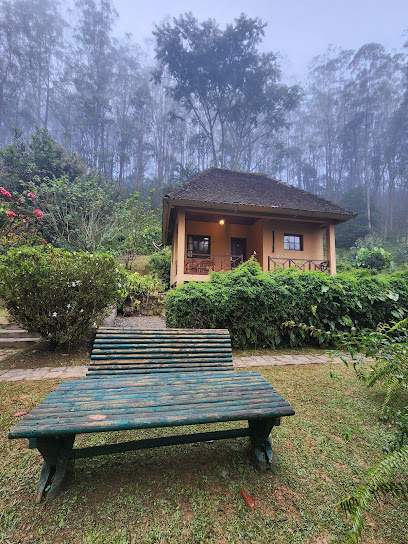
Andasibe-Mantadia National Park
Discover the enchanting Andasibe-Mantadia National Park, Madagascar's wildlife haven, filled with lush rainforests and unique species awaiting your exploration.
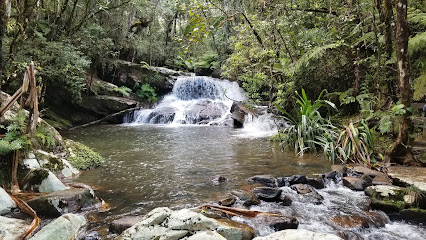
Mantadia Lodge
Experience the tranquility of nature at Mantadia Lodge, your gateway to Madagascar's stunning biodiversity and eco-friendly hospitality.

ANDASIBE LEMURS LODGE
Discover a serene escape at Andasibe Lemurs Lodge, your gateway to Madagascar's unique wildlife and lush rainforests.
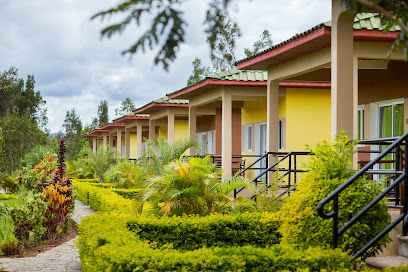
Andasibe Hotel - Andasibe/Mantadia Park
Experience the beauty of Madagascar at Andasibe Hotel, your perfect base for exploring Andasibe/Mantadia Park's stunning wildlife and landscapes.

Park VOIMMA
Explore the breathtaking beauty of Park VOIMMA in Andasibe, Madagascar, where vibrant wildlife and lush greenery await every nature enthusiast.
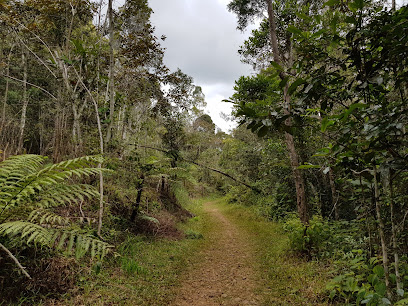
Parc National Andasibe Mantadia
Explore the breathtaking biodiversity of Parc National Andasibe Mantadia, a paradise for nature lovers and wildlife enthusiasts in Madagascar.
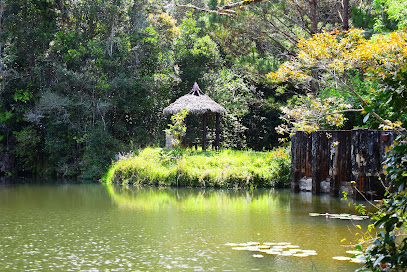
Relais de Mantadia
Experience the tranquility of Relais de Mantadia, your gateway to Madagascar's Andasibe National Park and its vibrant wildlife.

Andasibe Forest Lodge
Experience the enchantment of Madagascar at Andasibe Forest Lodge, where nature and comfort meet in perfect harmony.

Essential bars & hidden hideouts
Réserve spéciale d'Analamazoatra
Immerse yourself in the lush beauty of Réserve spéciale d'Analamazoatra, Madagascar's enchanting nature preserve teeming with unique wildlife.
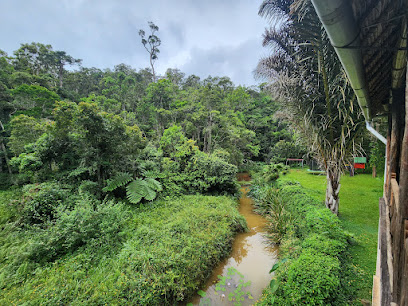
Vakona Forest Lodge
Experience the serene beauty and rich wildlife of Madagascar at Vakona Forest Lodge, your gateway to unforgettable adventures in nature.

Andasibe-Mantadia National Park
Discover the wonders of Andasibe-Mantadia National Park, a biodiverse paradise in Madagascar, home to unique wildlife and lush landscapes.
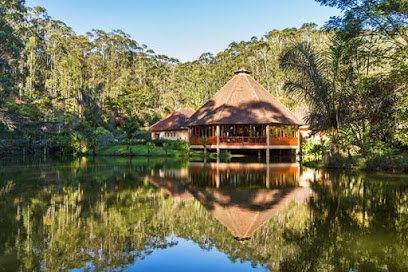
Hotel Feon' ny Ala
Discover the perfect blend of comfort and nature at Hotel Feon' ny Ala in Andasibe, Madagascar, your gateway to an unforgettable wildlife adventure.

Mantadia Lodge
Experience the luxury of Mantadia Lodge, a serene retreat in Madagascar's lush rainforest, perfect for nature lovers and adventure seekers.

ANDASIBE LEMURS LODGE
Discover the enchanting Andasibe Lemurs Lodge, your gateway to Madagascar's rich wildlife and breathtaking rainforest adventures.
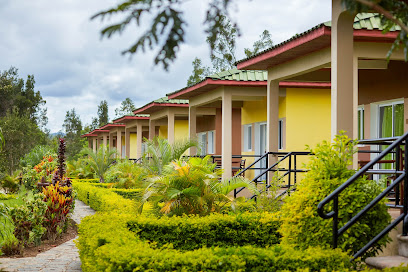
Andasibe Hotel - Andasibe/Mantadia Park
Discover the beauty of Andasibe at the Andasibe Hotel, your perfect base for exploring the wonders of Andasibe/Mantadia National Park.

Park VOIMMA
Explore Park VOIMMA in Andasibe, a haven for nature lovers with stunning landscapes, unique wildlife, and unforgettable adventures in Madagascar.
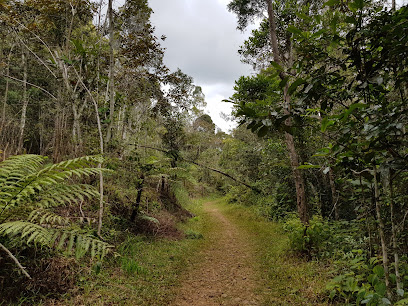
Marie Lodge Andasibe
Experience the beauty of Madagascar at Marie Lodge Andasibe, where nature meets comfort in a harmonious retreat.
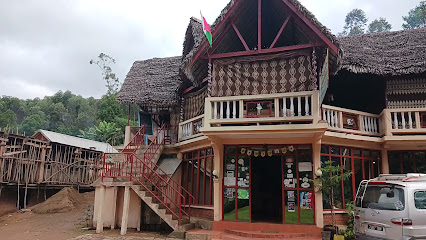
Parc National Andasibe Mantadia
Discover the breathtaking biodiversity and stunning landscapes of Parc National Andasibe Mantadia, Madagascar's premier natural sanctuary.

Relais de Mantadia
Immerse yourself in nature's embrace at Relais de Mantadia, a serene hotel in Madagascar's lush rainforest, close to Mantadia National Park.

Old 7 bar
Experience the dynamic nightlife of Antananarivo at Old 7 Bar, where vibrant atmosphere meets exquisite drinks and local culture.
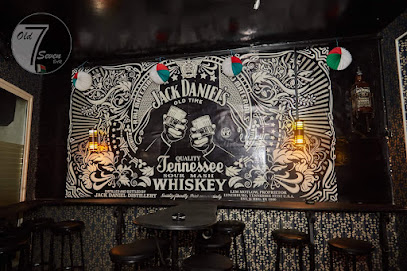
Indri Lodge Andasibe
Discover the beauty and wildlife of Madagascar at Indri Lodge Andasibe, your gateway to adventure in a lush, eco-friendly setting.

Andasibe Cyperus Hotel
Discover the beauty of Madagascar from the comfort of Andasibe Cyperus Hotel, your gateway to lush landscapes and vibrant wildlife.

Eulophiella
Discover the natural beauty of Andasibe while enjoying the cozy comforts of Eulophiella, your perfect retreat in Madagascar.

Local Phrases about Andasibe-Mantadia National Park
-
- HelloSalama
[sah-lah-mah] - GoodbyeVeloma
[veh-loh-mah] - YesEny
[eh-ny] - NoTsy
[tsee] - Please/You're welcomeAzafady
[ah-zah-fah-dy] - Thank youMisaotra
[mee-sah-oh-trah] - Excuse me/SorryMiala tsiny
[mee-ah-lah tsee-ny] - How are you?Inona ny vaovao?
[ee-noh-nah ny vah-oh-vah-oh] - Fine. And you?Tsara. Ianao?
[tsah-rah. ee-ahn-ow] - Do you speak English?Manana fiteny Anglisy ve ianao?
[mah-nah-nah fee-teh-ny ah-nglee-see veh ee-ahn-ow] - I don't understandTsy mifanaraka amin'ny voalohany
[tsee mee-fah-nah-rah-kah ah-meen-ny voh-ah-loh-hahn]
- HelloSalama
-
- I'd like to see the menu, pleaseTe-hahana ho hitady ny menio, azafady
[te-hah-hah-nah oh hee-tah-dy ny meh-nyoh, ah-zah-fah-dy] - I don't eat meatTsy mihinam-pandray
[tsee mee-ee-nahm-pahn-drah-ee] - Cheers!Santé!
[sahn-teh] - I would like to pay, pleaseTe-hahana ho mandray, azafady
[te-hah-hah-nah oh mahn-drah-ee, ah-zah-fah-dy]
- I'd like to see the menu, pleaseTe-hahana ho hitady ny menio, azafady
-
- Help!Fanantenana!
[fah-nahn-teh-nahn] - Go away!Mihinana!
[mee-hee-nahn] - Call the Police!Mangalatra ny polisy!
[mahng-gah-lah-trah ny poh-lee-see] - Call a doctor!Mangalatra dokotera!
[mahng-gah-lah-trah doh-koh-teh-rah] - I'm lostEfa nandeha
[eh-fah nahn-deh-hah] - I'm illTsy mety
[tsee meh-tee]
- Help!Fanantenana!
-
- I'd like to buy...Te-hahana ho mamaky...
[te-hah-hah-nah oh mah-mah-kee] - I'm just lookingMiandry fotsiny
[mee-ahn-dree foh-tsee-ny] - How much is it?Ohom-baiko ity?
[oh-ohm-bah-ee-koh ee-tee] - That's too expensiveMahafinaritra lavitra ny vidiny
[mah-hah-fee-nah-ree-trah lah-vee-trah ny vee-dee-nee] - Can you lower the price?Avela mijery ny vidiny?
[ah-veh-lah mee-jeh-ree ny vee-dee-nee]
- I'd like to buy...Te-hahana ho mamaky...
-
- What time is it?Inona no ora?
[ee-noh-nah noh oh-rah] - It's one o'clockIrery iray ora
[ee-reh-ree ee-rah-ee oh-rah] - Half past (10)Efatra sy folo
[eh-fah-trah see foh-loh] - MorningMaraina
[mah-rah-ee-nah] - AfternoonAlina
[ah-lee-nah] - EveningHariva
[hah-ree-vah] - YesterdayOmaly
[oh-mah-ly] - TodayAnio
[ah-nyoo] - TomorrowReny
[reh-ny] - 1Iray
[ee-rah-ee] - 2Roa
[roo-ah] - 3Telo
[teh-loo] - 4Efatra
[eh-fah-trah] - 5Dimy
[dee-mee] - 6Enina
[eh-nee-nah] - 7Fitam-polo
[fee-tahm-poo-loo] - 8Valo
[vah-loo] - 9Sivy
[see-v] - 10Folo
[foh-loh]
- What time is it?Inona no ora?
-
- Where's a/the...?Aiza ny...
[ah-ee-zah ny] - What's the address?Inona ny adiresy?
[ee-noh-nah ny ah-dee-res] - Can you show me (on the map)?Avela maty ny toerana (amin'ny sarintany)?
[ah-veh-lah mah-tee ny toy-rah-nah ah-meen-ny sah-reen-tahn] - When's the next (bus)?Aiza ny farany (bas)?
[ah-ee-zah ny fah-rah-nee bas] - A ticket (to ....)Fandaniana (ho...)
[fahn-dah-nee-ah-nah oh]
- Where's a/the...?Aiza ny...
History of Andasibe-Mantadia National Park
-
Andasibe-Mantadia National Park, located in the eastern part of Madagascar, was officially established in 1989. The park was created to preserve the unique biodiversity of the region, which includes a variety of endemic species of flora and fauna. The park is divided into two main areas: the smaller, more accessible Andasibe (also known as Analamazaotra) and the larger, more remote Mantadia. Both areas are home to the famous indri, the largest living lemur, along with numerous other species.
-
The local communities around Andasibe-Mantadia National Park have played a crucial role in the park's conservation efforts. Traditional practices and deep-rooted respect for nature have helped in the preservation of this unique ecosystem. In recent years, community-based ecotourism initiatives have been developed to provide sustainable livelihoods for local people while promoting conservation. These initiatives include guiding services, cultural performances, and the sale of local crafts.
-
Andasibe-Mantadia National Park has been a focal point for biodiversity research. Scientists from around the world have conducted studies to understand the unique species that inhabit the park. One of the most significant discoveries was the identification of several new species of reptiles and amphibians, which highlighted the importance of the park as a biodiversity hotspot. Research efforts have also focused on the behavior and ecology of the indri, contributing to global knowledge about this endangered species.
-
Despite its protected status, Andasibe-Mantadia National Park faces several conservation challenges, including deforestation, illegal logging, and habitat fragmentation. Conservation organizations, in collaboration with the Malagasy government and local communities, have implemented various measures to address these issues. Efforts include reforestation projects, the establishment of patrol teams to prevent illegal activities, and educational programs to raise awareness about the importance of conservation.
-
Andasibe-Mantadia National Park is not only significant for its natural beauty but also for its cultural heritage. The local Malagasy people have a rich tradition of folklore and legends associated with the park. One such legend is the story of the indri, which is believed to be the ancestor of humans according to local lore. These cultural narratives add a layer of depth to the visitor experience and highlight the intertwined relationship between nature and culture in Madagascar.
Andasibe-Mantadia National Park Essentials
-
Andasibe-Mantadia National Park is located approximately 150 kilometers east of Antananarivo, the capital of Madagascar. The most common way to get there is by car, which typically takes around 3 to 4 hours. You can hire a private taxi or rent a car from Antananarivo. Alternatively, there are regular taxi-brousse (shared minivan) services that operate between Antananarivo and Andasibe. For a more scenic route, consider taking the train from the capital to Moramanga, then a short taxi ride to the park.
-
Within Andasibe-Mantadia National Park, transportation options are limited. Most visitors explore the park on foot through guided tours. Local guides are available and highly recommended for navigating the park's trails and ensuring you don't miss any of the unique wildlife. For longer distances, you can hire a 4x4 vehicle with a driver. Bicycle rentals are also available for those who prefer a more active mode of transportation.
-
The official currency in Madagascar is the Malagasy Ariary (MGA). While some lodges and restaurants in and around the park may accept credit cards, it is advisable to carry cash, especially for smaller establishments and when paying local guides. ATMs are available in Antananarivo and Moramanga, but it's best to withdraw sufficient cash before arriving in Andasibe, as access to banking services is limited.
-
Andasibe-Mantadia National Park is generally safe for tourists. However, it is advisable to take standard precautions. Avoid walking alone at night and be mindful of your belongings in crowded areas. While the park itself is safe, be cautious when traveling to and from Antananarivo, as there have been reports of petty theft along the route. Always use reputable transportation services and avoid isolated areas.
-
In case of an emergency, dial 117 for police assistance and 124 for medical emergencies. The nearest medical facilities are located in Moramanga, about an hour's drive from the park. It is essential to have travel insurance that covers medical emergencies. Local guides are trained in basic first aid, and lodges often have emergency protocols in place. For minor health issues, bring a basic first aid kit and any necessary medications.
-
Fashion: Do wear comfortable, breathable clothing suitable for hiking. Avoid bright colors that may disturb the wildlife. Religion: Do respect local customs and traditions. Remove your hat when entering churches or sacred sites. Public Transport: Do be respectful to fellow passengers. Don't bring large luggage on shared transport, as space is often limited. Greetings: Do greet people with a friendly 'Salama!' (Hello). A handshake is also common. Eating & Drinking: Do try local dishes and accept food offerings graciously. Don't waste food, as it is considered disrespectful.
-
To experience Andasibe-Mantadia National Park like a local, consider staying in eco-lodges that support sustainable tourism. Engage with local guides who can provide insights into the park's unique flora and fauna. Visit the Vakona Forest Reserve to see lemurs up close and learn about conservation efforts. Don't miss the chance to enjoy traditional Malagasy cuisine at local restaurants. For a unique cultural experience, attend a local music or dance performance.
Nearby Cities to Andasibe-Mantadia National Park
-
Things To Do in Antananarivo
-
Things To Do in Toamasina
-
Things To Do in Antsirabe
-
Things To Do in Fianarantsoa
-
Things To Do in Manakara
-
Things To Do in Mahajanga
-
Things To Do in Majunga
-
Things To Do in Nosy Be
-
Things To Do in Mandrare River
-
Things To Do in Ifaty
-
Things To Do in Fort Dauphin
-
Things To Do in Toliara
-
Things To Do in Antsiranana
-
Things To Do in Diego Suarez
-
Things To Do in Chirongui


